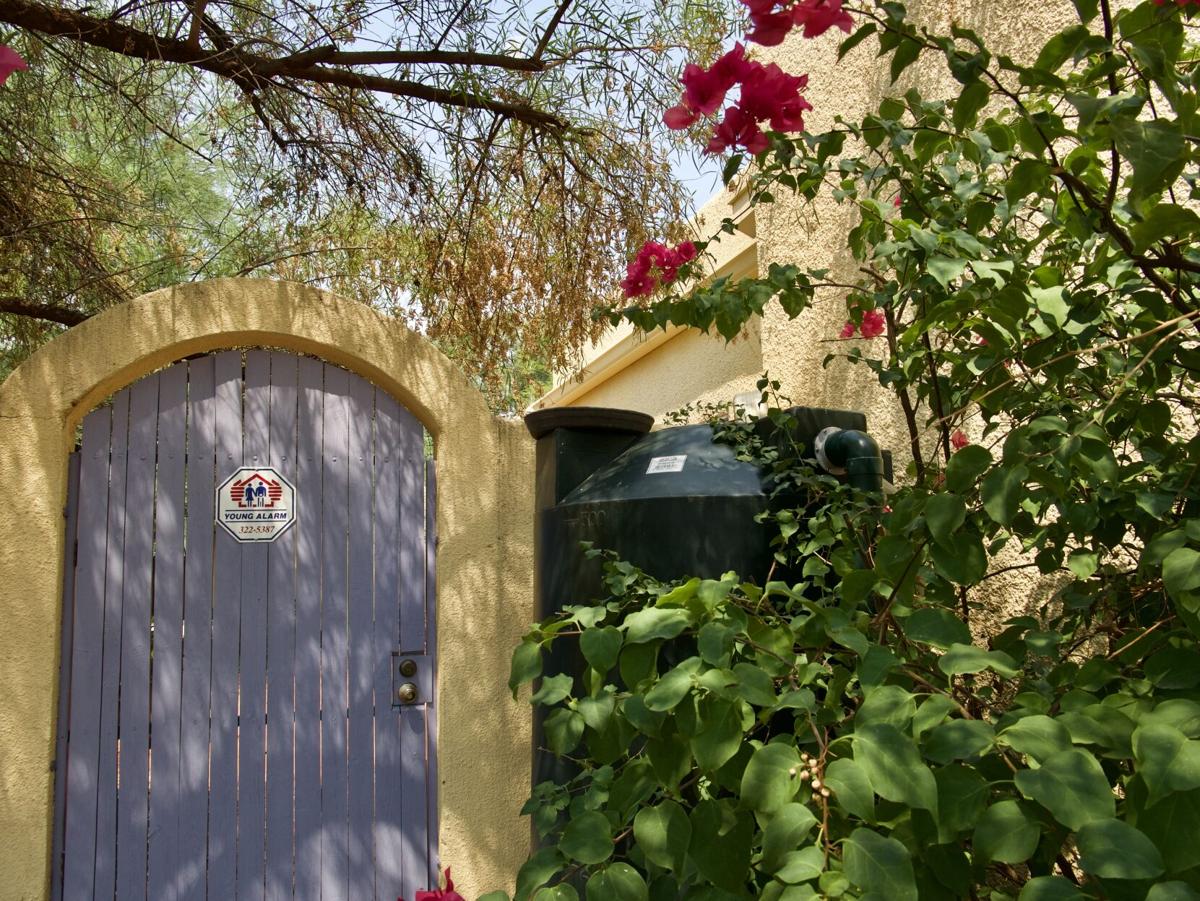Active rainwater harvesting involves the use of gutters and tanks to channel and store rainwater. This allows you to “bank” rainwater in our unpredictable climate so you can stretch out the period of time rainwater is available for irrigating plants. It is usually used along with passive rainwater harvesting to maximize the amount of rain you can use in your landscape.
Rainwater is best for plants, because it doesn't contain the minerals present in our irrigation water which over time add salts to the soil. Rain flushes those salts out, and also carries some nitrogen and other nutrients as well as microbes present in the air. If you have any non-native plants in your garden, they would definitely benefit from occasional deep watering with rainwater.
If you have the space and budget, you can purchase large water tanks or set up a system of your own using recycled food-grade barrels, trash cans, storage containers and the like. Water tanks come in many different sizes and configurations, so chances are you will find a combination that will fit in the space you have. Water tanks can be set up individually or can be connected in a series. If you have a limited budget, you can start with one tank then add others as budgeting and space permits.
The first step to figuring out your active rainwater harvesting system is to walk around your garden to get a sense of the space you have, the locations where you may want the tanks (ideally close to plants that require irrigation) and to see if the tanks can provide any other services for you. For example, tanks can also double as hardscaping features to provide shade, privacy, sound blocking or vertical space in your garden. You will probably want to place the tank in an elevated position on your landscape — this can obviate the need for a pump, as gravity will help the water drain out of the tank. The higher the tank is relative to the irrigation area, the farther the water will drain.
The next step is to calculate the roof area that you will be harvesting water from. Don’t worry about the vertical slopes and angles of your roof — just look at your property on Google Maps and use the measurement feature to estimate your roof area. Once you have that number, multiply your roof’s square footage by 0.62. This will give you the total number of gallons you can expect to harvest per inch of rain. You probably don’t need tanks to hold more than 1-2 inches of rainfall since our largest storms rarely exceed 2 inches of rain. If you have the space and budget you can put in as many tanks as you want.
To determine how much water you may want to harvest and store, figure out what plants you want to grow and calculate their yearly water needs. Brad Lancaster’s website has helpful charts which list the yearly water requirements of many plants. His books on rainwater harvesting are considered the definitive resource by many around the globe. When looking at the chart and choosing plants, keep in mind that plants that are winter-deciduous, such as fruit trees, will not require much water during the winter months, so they may not be as water-intensive as they seem.
A number of companies in town can help with designing and installation of active rainwater harvesting systems. Watershed Management Group can design a system for you, as can Eco Sense Sustainable Landscapes and Southern Arizona Rain Gutters. If you want help with gutter installation, companies such as Gutter Systems of Southern Arizona can help as well.
The City of Tucson offers rebates for homeowners installing rainwater harvesting systems. You must be a City of Tucson water customer and attend an approved workshop on rainwater harvesting. These workshops are provided by Watershed Management Group, Sonora Environmental Research Institute and intermittently by the Pima County Cooperative Extension.
More resources:
With millions of people living in areas dealing with increasing drought and rising water costs, many are learning how to harvest rainwater.





